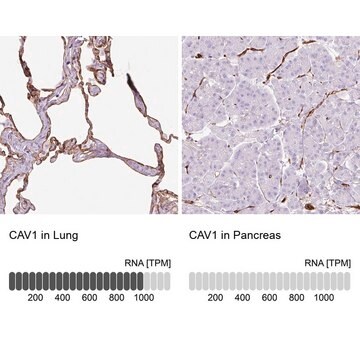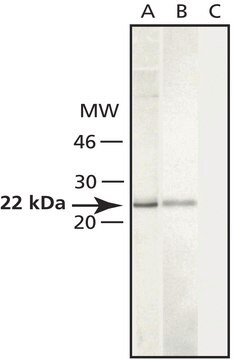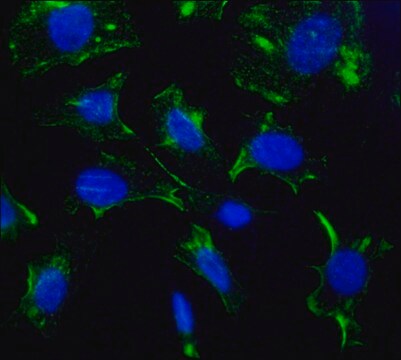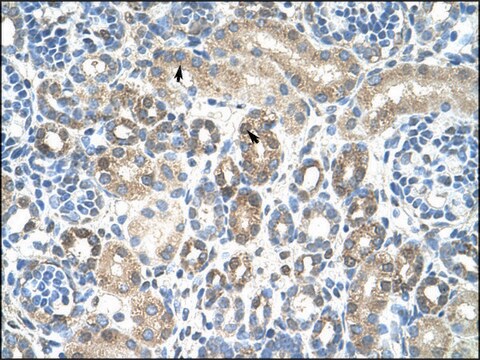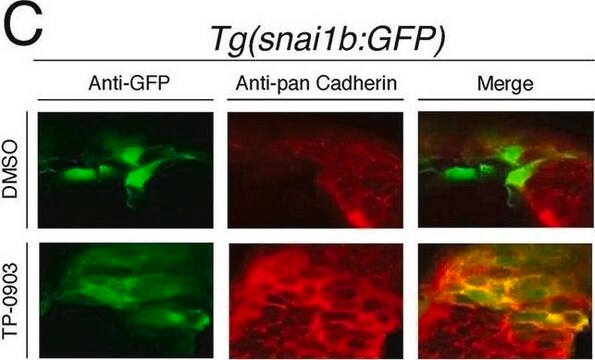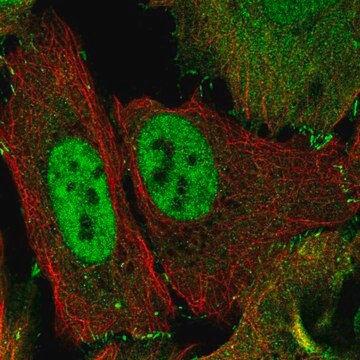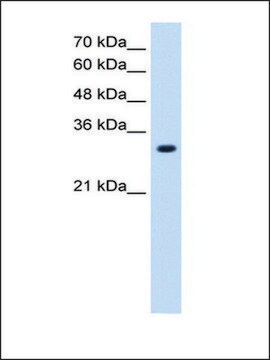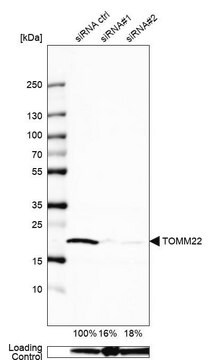C3237
Anti-Caveolin-1 antibody produced in rabbit

IgG fraction of antiserum, buffered aqueous solution
Sinonimo/i:
Anti-Caveolin-1, Anti-VIP21
About This Item
Prodotti consigliati
Origine biologica
rabbit
Coniugato
unconjugated
Forma dell’anticorpo
IgG fraction of antiserum
Tipo di anticorpo
primary antibodies
Clone
polyclonal
Stato
buffered aqueous solution
PM
antigen 22 kDa
Reattività contro le specie
human, rat, mouse
Convalida avanzata
independent
Learn more about Antibody Enhanced Validation
tecniche
indirect immunofluorescence: 1:500 using mouse fibroblast NIH3T3 cell line
microarray: suitable
western blot: 1:2,000 using whole cell extract of the human umbilical vein endothelial HUVEC cell line and the rat fibroblast Rat-1 cell line
N° accesso UniProt
Condizioni di spedizione
dry ice
Temperatura di conservazione
−20°C
modifica post-traduzionali bersaglio
unmodified
Informazioni sul gene
human ... CAV1(857)
mouse ... Cav1(12389)
rat ... Cav1(25404)
Cerchi prodotti simili? Visita Guida al confronto tra prodotti
Descrizione generale
Specificità
Immunogeno
Applicazioni
- indirect immunofluorescence
- in confocal microscopy
- western blotting
Azioni biochim/fisiol
Stato fisico
Esclusione di responsabilità
Non trovi il prodotto giusto?
Prova il nostro Motore di ricerca dei prodotti.
Prodotti correlati
Codice della classe di stoccaggio
10 - Combustible liquids
Classe di pericolosità dell'acqua (WGK)
WGK 1
Punto d’infiammabilità (°F)
Not applicable
Punto d’infiammabilità (°C)
Not applicable
Scegli una delle versioni più recenti:
Certificati d'analisi (COA)
Non trovi la versione di tuo interesse?
Se hai bisogno di una versione specifica, puoi cercare il certificato tramite il numero di lotto.
Possiedi già questo prodotto?
I documenti relativi ai prodotti acquistati recentemente sono disponibili nell’Archivio dei documenti.
Il team dei nostri ricercatori vanta grande esperienza in tutte le aree della ricerca quali Life Science, scienza dei materiali, sintesi chimica, cromatografia, discipline analitiche, ecc..
Contatta l'Assistenza Tecnica.